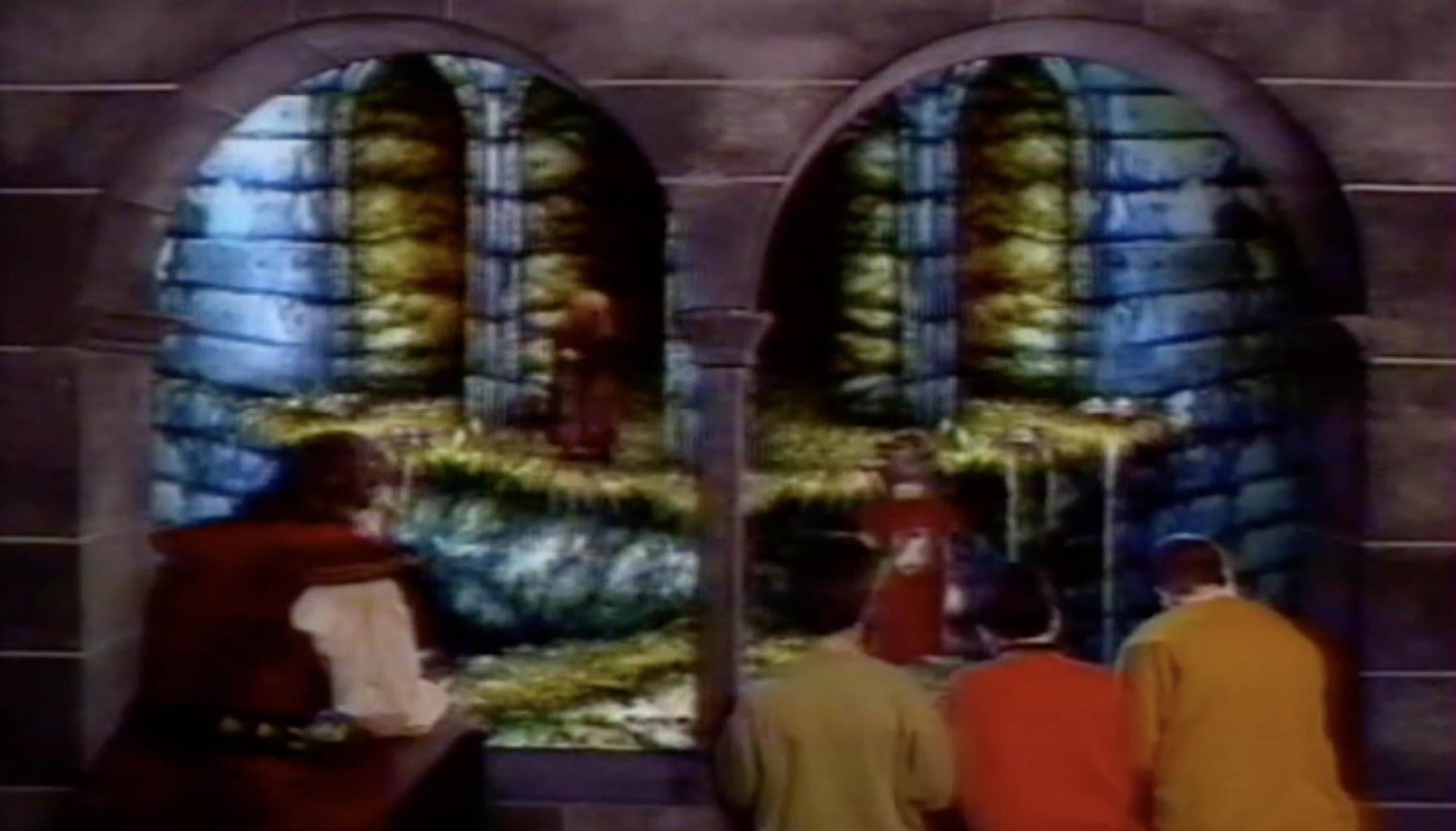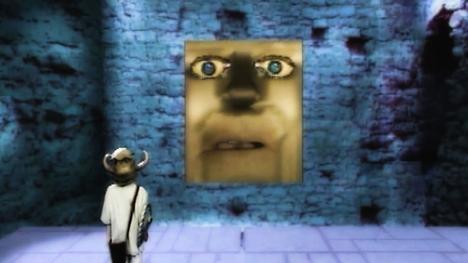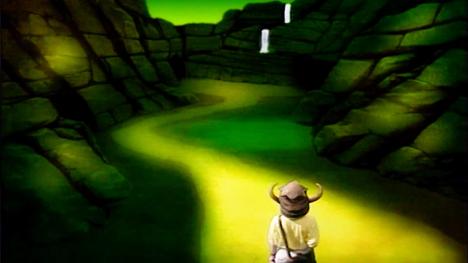In 2004, Fabien (a French fan of the show) supplied us with some press cuttings of Le Chevalier du Labyrinthe
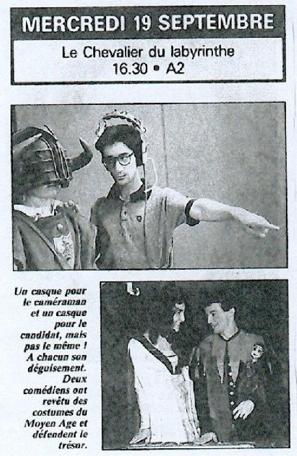
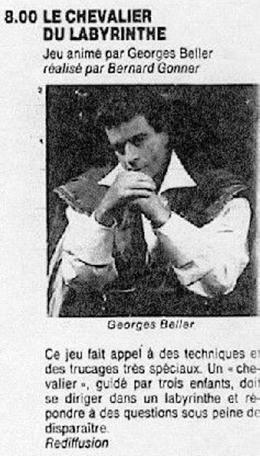
Adverts for the Wednesday and Sunday shows. The former observes that the 'knight' and cameraman are both wearing a headset!
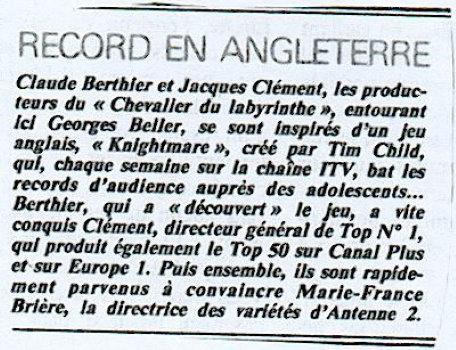
This snippet mentions how Knightmare came to the attention of Claude Berthier after record-breaking performances in the UK. Fellow producer Jacques Clément and commissioner Marie-France Briere took little persuading that Chevalier would be a success.
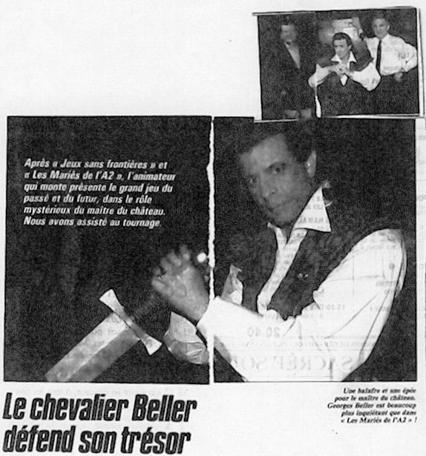
Georges Beller was renowned as a comic and entertainer. Here, he is featured in an advert for "the great game of the past and the future".
The memoirs of a French fan
On New Year's Eve, 2000, Fabien joined us in Knightmare Chat to discuss Le Chevalier du Labyrinthe. Below are a few (lightly edited) highlights from his recollections of the show.
One main difference was progression. This was done by the accumulation of knowledge that made it possible for the team to reach the final stage. All knowledge gained was vital to get to the end of the dungeon, whereas in Knightmare, information was redundant after use.
The final 'room' involved the team having to solve a puzzle, which might be putting a set of shapes or words in the right order. If the team get this right, the dungeoneer would be able to release a sword and the prizes would then be revealed.
Characters included Merlin, Morganne (a fairy), and Mandragore (a witch). 'The Death' was a skeleton called Tados. There were also two female warriors in the dungeon, Gundrada and Stiletta. A jester, Bouffon, was included, as well as a talking raven. We believe some of these names were based on the British equivalents.
There appeared to be the start of what turned out in British Knightmare to be a division of the foes, to create 'The Opposition' and 'The Powers That Be'. Tados was the leader of what would have been The Opposition. Alongside him was a raven called Tarock, which posed extremely difficult questions to the teams. Merlin was on the side of the Powers That Be, much like he was in Britain.
When a dungeoneer dies, the quest continues with one of the advisors taking over the role. The quest ends once the third dungeoneer of the team dies. Perished dungeoneers reappeared to collect their prize if the team won, or to wave goodbye to the castle if the team lost.
There was an EP released that contained the theme music to the TV show! Unsurprisingly, this is no longer available in France (at least not on EP).
Nowadays, the actors who stared on French Knightmare are considered legends. They've gone on to other programmes and roles. The 'Master of the Castle', Georges Beller, is a well-known actor in France.
